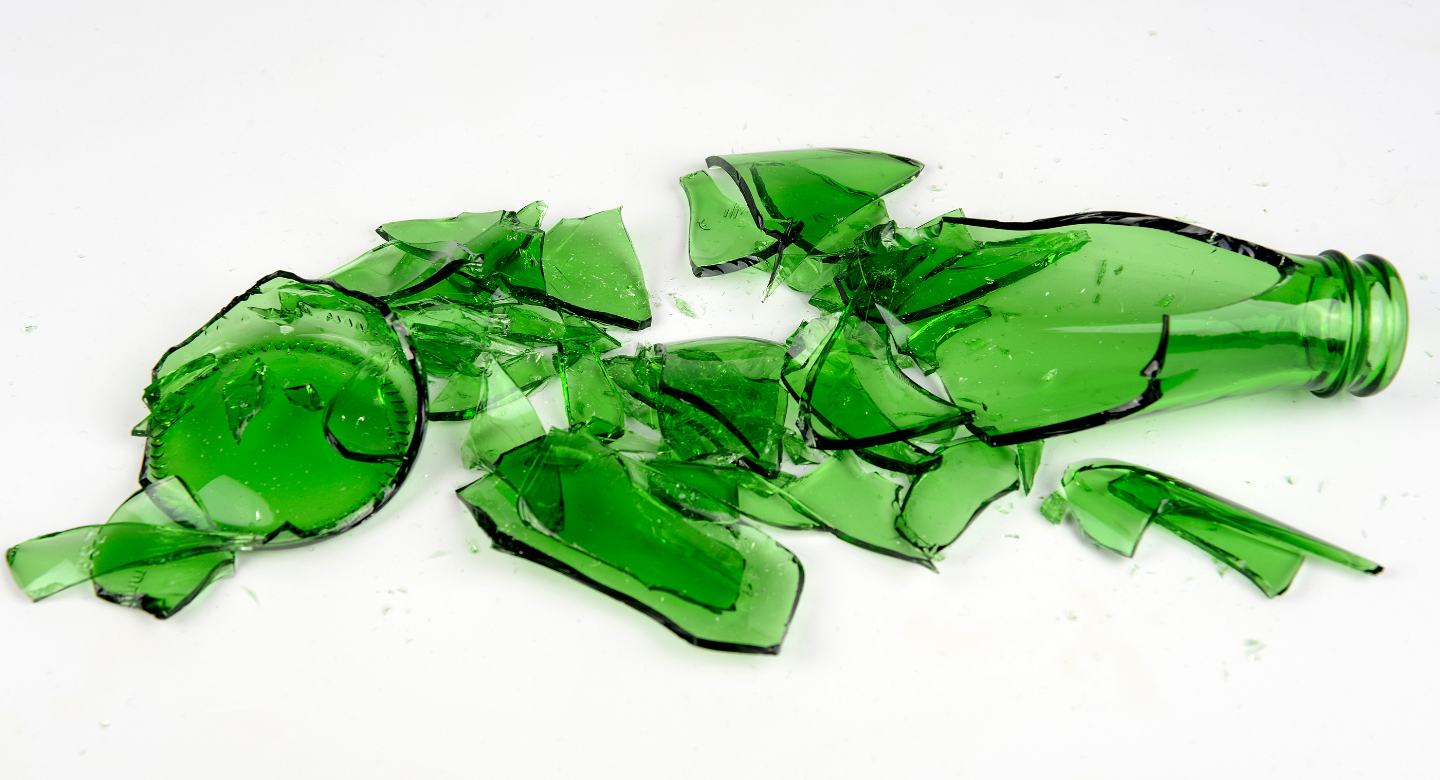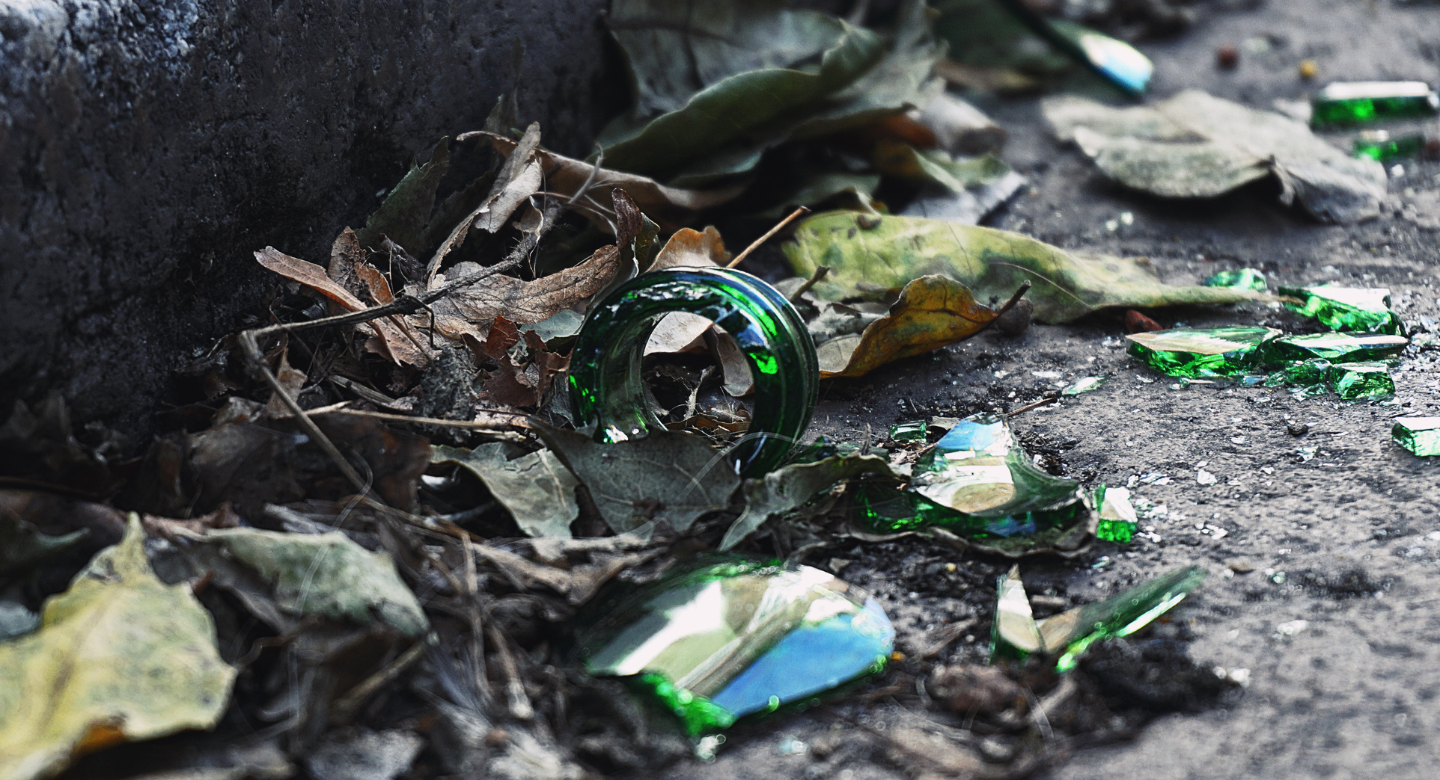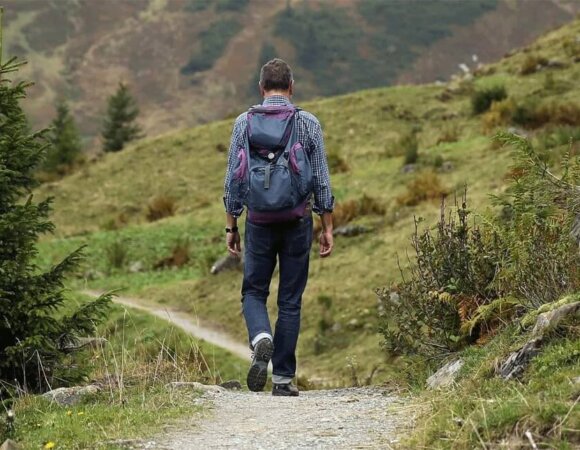3Rs of Sustainability for Broken Glass Items
The 3Rs of Sustainability for Broken Glass Items—Reduce, Reuse, Recycle—offer a comprehensive framework for managing glass waste responsibly while traveling. By understanding and implementing these principles, travelers can minimize the environmental impact of glass accidents, contribute to local recycling efforts, and even discover creative ways to repurpose damaged items into meaningful mementos of their journeys.
Table of Contents
ToggleTravel inevitably involves the occasional mishap—from dropped bottles of local wine to shattered souvenir glasses that seemed unbreakable when purchased. For eco-conscious travelers, these accidents present both safety concerns and environmental responsibilities that extend far beyond simple cleanup. How we handle broken glass items during our journeys can significantly impact the destinations we visit and the communities that call them home.
Why Broken Glass Items Sustainability Matters in Travel and Tourism

Glass waste presents unique challenges in tourism settings, where improper disposal can create serious safety hazards for both wildlife and future visitors. Broken glass items left on beaches, hiking trails, or popular tourist sites pose risks to bare feet, paws, and hooves for years to come, as glass can take up to one million years to decompose naturally in the environment. The sharp edges of improperly discarded glass fragments can injure animals and humans alike, creating liability concerns for destination managers.
Beyond safety considerations, the environmental impact of glass waste is significant when not properly managed. While glass is infinitely recyclable without quality degradation, broken glass items that end up in regular waste streams or, worse, scattered in natural environments represent a complete loss of valuable raw materials. Tourist destinations often lack adequate infrastructure for handling glass waste, making responsible management by visitors even more critical for protecting these special places.
How Sustainable Travel Helps
Embracing the 3Rs of Sustainability for Broken Glass Items contributes to environmental protection and community well-being in multiple ways. When travelers take responsibility for glass accidents by collecting fragments safely and disposing of them properly, they prevent potential injuries to local residents, other tourists, and wildlife. This conscientious behavior also reduces the burden on destination cleaning crews and waste management systems.
Sustainable glass waste management during travel supports circular economy principles by ensuring valuable materials reach appropriate recycling facilities rather than being lost forever in landfills or natural environments. When travelers learn about local glass recycling programs and contribute to them, they help reduce the demand for virgin materials needed to produce new glass products, ultimately decreasing energy consumption and environmental impact associated with glass manufacturing.
How to Travel Sustainably with Broken Glass Items
Implementing the 3Rs of Sustainability for Broken Glass Items begins with prevention through careful packing and handling. Use protective wrapping for glass items in luggage, choose shatterproof alternatives when possible, and be mindful when handling glass bottles, cups, or decorative items in unfamiliar environments. Keep a small flashlight or phone light handy for thorough cleanup in case accidents occur, and pack a sturdy brush and dustpan or similar tools for effective fragment collection.
When glass breaks during your travels, prioritize safety first—clear the area of people and pets, wear closed-toe shoes during cleanup, and use proper lighting to ensure no fragments are missed. After securing all visible pieces, research local glass recycling options or ask accommodation staff about proper disposal methods. Many experienced travelers carry a designated container for collecting glass fragments until they can be properly disposed of, preventing further accidents during transport to appropriate facilities.
The Role of the 3Rs in Broken Glass Items Sustainability

1. Reduce: Minimizing Glass Breakage and Waste
The first principle in the 3Rs of Sustainability for Broken Glass Items focuses on prevention through mindful choices and careful handling. Select durable glassware when purchasing souvenirs, avoid overpacking glass items that might collide during transport, and choose appropriate containers for carrying glass bottles or delicate items during day trips. Understanding the properties of different glass types can help travelers make better choices—tempered glass, for instance, breaks into smaller, less dangerous pieces than regular glass.
Reduction also involves recognizing when glass items might be unnecessary altogether. Consider whether plastic or metal alternatives might serve the same purpose without breakage risk, especially for outdoor activities or adventure travel. Many seasoned travelers have learned to appreciate non-glass souvenirs like textiles, ceramics, or artwork that capture local culture without the fragility concerns that glass items present.
2. Reuse: Creative Repurposing of Damaged Glass Items
The second component of the 3Rs of Sustainability for Broken Glass Items explores opportunities to give damaged glass new life before considering disposal. Large, cleanly broken pieces can sometimes be repurposed into mosaic art, garden decorations, or small accent pieces that serve as unique travel mementos. Some travelers have created beautiful memory jars using fragments from special places, safely sealed and labeled to preserve meaningful moments.
Creative reuse requires careful consideration of safety—only large, clean fragments with smooth edges should be considered for repurposing, and proper safety equipment should be used during any modification work. Many artisan communities welcome donations of interesting glass fragments for use in local craft projects, providing travelers with opportunities to contribute to local art initiatives while ensuring their broken items serve a meaningful purpose.
3. Recycle: Ensuring Proper Glass Recycling
When glass items cannot be repaired or repurposed, the final principle in the 3Rs of Sustainability for Broken Glass Items ensures these materials re-enter the production cycle through proper recycling. Glass recycling requirements vary significantly by location—some facilities accept all colors together, while others require separation by color (clear, brown, green). Research local recycling guidelines before attempting disposal, as improper sorting can contaminate entire recycling batches.
The recycling process for glass is remarkably efficient, with recycled glass (called cullet) actually improving the manufacturing process by reducing the melting temperature needed for new glass production. This efficiency makes proper glass recycling one of the most environmentally beneficial waste management activities travelers can participate in, directly contributing to resource conservation and energy savings in glass manufacturing.
Sustainable Glass Production and Disposal Practices
Manufacturers are increasingly supporting the 3Rs of Sustainability for Broken Glass Items through improved packaging design, clearer recycling instructions, and take-back programs for damaged products. Some companies now produce travel-friendly glass items with reinforced construction or protective sleeves that reduce breakage risk, while others focus on using higher percentages of recycled content in new products.
When purchasing glass items during travel, look for brands that demonstrate commitment to sustainable practices through responsible sourcing, energy-efficient production methods, and clear end-of-life instructions. Many artisan glass makers in tourist destinations now incorporate recycled materials into their work, creating a local circular economy that benefits both visitors and communities while reducing environmental impact.
Regulatory Insights & Glass Waste Standards in India

India has developed comprehensive frameworks supporting the 3Rs of Sustainability for Broken Glass Items through solid waste management rules and extended producer responsibility regulations. The country’s Solid Waste Management Rules require proper segregation of different waste types, including glass, and many states have established specific protocols for handling hazardous waste like broken glass to prevent injuries during collection and processing.
For travelers in India, government initiatives have led to improved glass recycling infrastructure in major tourist destinations, with color-coded collection bins and clear instructions for proper disposal. The Indian glass industry’s commitment to using recycled content—some facilities now use up to 90% recycled glass in production—demonstrates how proper waste management by tourists directly supports sustainable manufacturing practices.
Environmental Impact Analysis of Glass Waste Management
Understanding the environmental implications of different glass waste management approaches reinforces the importance of the 3Rs of Sustainability for Broken Glass Items. Properly recycled glass reduces manufacturing energy requirements by up to 30% compared to producing new glass from raw materials, while also reducing carbon dioxide emissions and extending the life of mining resources like sand, soda ash, and limestone.
When glass waste enters landfills instead of recycling facilities, it represents not only a lost resource but also occupies space indefinitely, as glass does not biodegrade. However, glass in landfills is generally inert and doesn’t leach harmful chemicals into groundwater, making it less environmentally problematic than many other waste types—though recycling remains the preferable option for resource conservation reasons.
Case Studies & Real-World Impact
The 3Rs of Sustainability for Broken Glass Items have inspired innovative programs worldwide. The “Glass Beach Cleanup” initiative in California transformed a former dump site into a tourist attraction while educating visitors about glass recycling and ocean conservation. Meanwhile, several Greek islands have implemented “Glass Exchange” programs where tourists can trade broken glass items for locally-made recycled glass products, creating circular economy models that benefit both visitors and local artisans.
Venice’s “Murano Glass Sustainability Project” demonstrates how traditional glass-making communities can incorporate modern sustainability principles while preserving cultural heritage. The project includes take-back programs for damaged items, artist residencies focused on recycled glass art, and educational workshops that teach visitors about the complete lifecycle of glass products from creation through responsible disposal.
Actionable Steps for Travelers
Make the 3Rs of Sustainability for Broken Glass Items part of your travel routine with these practical actions: pack glass items carefully with adequate protection, research local recycling options before your trip, keep emergency cleanup supplies accessible, and prioritize safety during any glass-related accidents. Learn to identify different glass types and their recycling requirements, and consider photographing recycling instruction signs in different languages for future reference.
Support local businesses that demonstrate glass sustainability practices, such as restaurants using recycled glassware or artisans incorporating recycled materials into their work. Share information about proper glass disposal with fellow travelers through social media or travel forums, and consider participating in organized beach or trail cleanups when available to help remove improperly discarded glass fragments from natural environments.
Conclusion: The Future of Glass Waste Sustainability
As we continue exploring our beautiful planet, implementing the 3Rs of Sustainability for Broken Glass Items will play an increasingly important role in preserving the safety and beauty of the destinations we love to visit. The Reduce, Reuse, Recycle framework offers travelers a practical approach to managing glass accidents and waste while contributing positively to local communities and environmental protection efforts.
The future of sustainable travel depends on taking responsibility for our impact, including the seemingly small matter of properly managing broken glass. When travelers consistently apply the 3Rs of Sustainability for Broken Glass Items, they help create safer environments for everyone, support local recycling economies, and demonstrate that sustainable tourism involves caring for destinations in both large and small ways. By embracing these principles, we ensure that the places that inspire us with their beauty remain safe and pristine for future generations of travelers to discover and enjoy.
Explore More
3Rs of Sustainability for Single-Use Packaging
3Rs of Sustainability for Aluminum Cans
3Rs of Sustainability for Old Clothes
Frequently Asked Questions (FAQs) on 3Rs of Sustainability for Broken Glass Items
What are the 3Rs of Sustainability for Broken Glass Items?
The 3Rs stand for Reduce, Reuse, and Recycle. Reduce means preventing glass breakage through careful handling and protective storage. Reuse involves repurposing broken glass pieces for creative projects or practical applications. Recycle ensures broken glass reaches proper recycling facilities where it can be melted down and reformed into new glass products.
Can broken glass be recycled like regular glass?
Yes, broken glass can be recycled, but it requires special handling due to safety concerns. Most recycling centers accept broken glass if it’s properly contained in puncture-proof containers or bags. The recycling process actually works better with smaller glass pieces since they melt more efficiently than whole bottles or jars.
How should I safely dispose of broken glass while traveling?
Wrap broken glass in newspaper or cloth, place it in a sturdy container like a plastic bottle, and label it clearly as “broken glass.” Never put loose broken glass in regular trash bags. Contact your hotel or local waste management to find the nearest glass recycling facility, or bring it home if local options aren’t available.
What creative ways can I reuse broken glass pieces?
Small broken glass pieces can become mosaic art, garden drainage material, or decorative elements in planters. Larger pieces might work as unique photo frames, candle holders, or garden stepping stones. Always smooth sharp edges with sandpaper and wear protective gloves when handling broken glass for reuse projects.
Is it safe to handle broken glass for reuse projects?
Handling broken glass requires proper safety precautions. Always wear thick gloves, eye protection, and closed-toe shoes. Work in a well-lit area and keep a first aid kit nearby. Sand down sharp edges before use, and never attempt to reuse glass that’s too small to handle safely or has intricate breaks.
How can I reduce glass breakage while traveling?
Pack glass items in bubble wrap or clothing, use hard-sided luggage for fragile items, and avoid overpacking bags. Choose plastic or metal alternatives when possible for travel-specific items. Store glass items in the center of your luggage surrounded by soft materials, and consider shipping fragile souvenirs separately.
What happens to recycled broken glass?
Recycled broken glass (called cullet) is melted down in furnaces and reformed into new glass products like bottles, jars, and windows. Using recycled glass reduces energy consumption by up to 30% compared to making glass from raw materials. One recycled glass container can be recycled endlessly without quality loss.
Are there any types of broken glass that cannot be recycled?
Certain glass types cannot be recycled with regular glass: mirrors, light bulbs, window glass, ceramics, crystal, and tempered glass. These materials have different melting points and chemical compositions. Check with local recycling facilities about special programs for these items, or look for specialized e-waste centers.
How do glass recycling programs work in tourist destinations?
Glass recycling availability varies significantly by destination. Many European cities have glass collection bins on streets, while some developing countries lack recycling infrastructure. Research recycling options before traveling, ask hotel staff about glass disposal, or use apps like “Recycle Coach” to locate nearby facilities.
What environmental benefits come from following the 3Rs for broken glass?
Following the 3Rs for broken glass reduces landfill waste, saves energy in manufacturing, and decreases carbon emissions. Recycling one glass bottle saves enough energy to power a light bulb for four hours. Proper glass recycling also reduces the need for raw material extraction, protecting natural habitats and reducing environmental degradation at tourist destinations.







